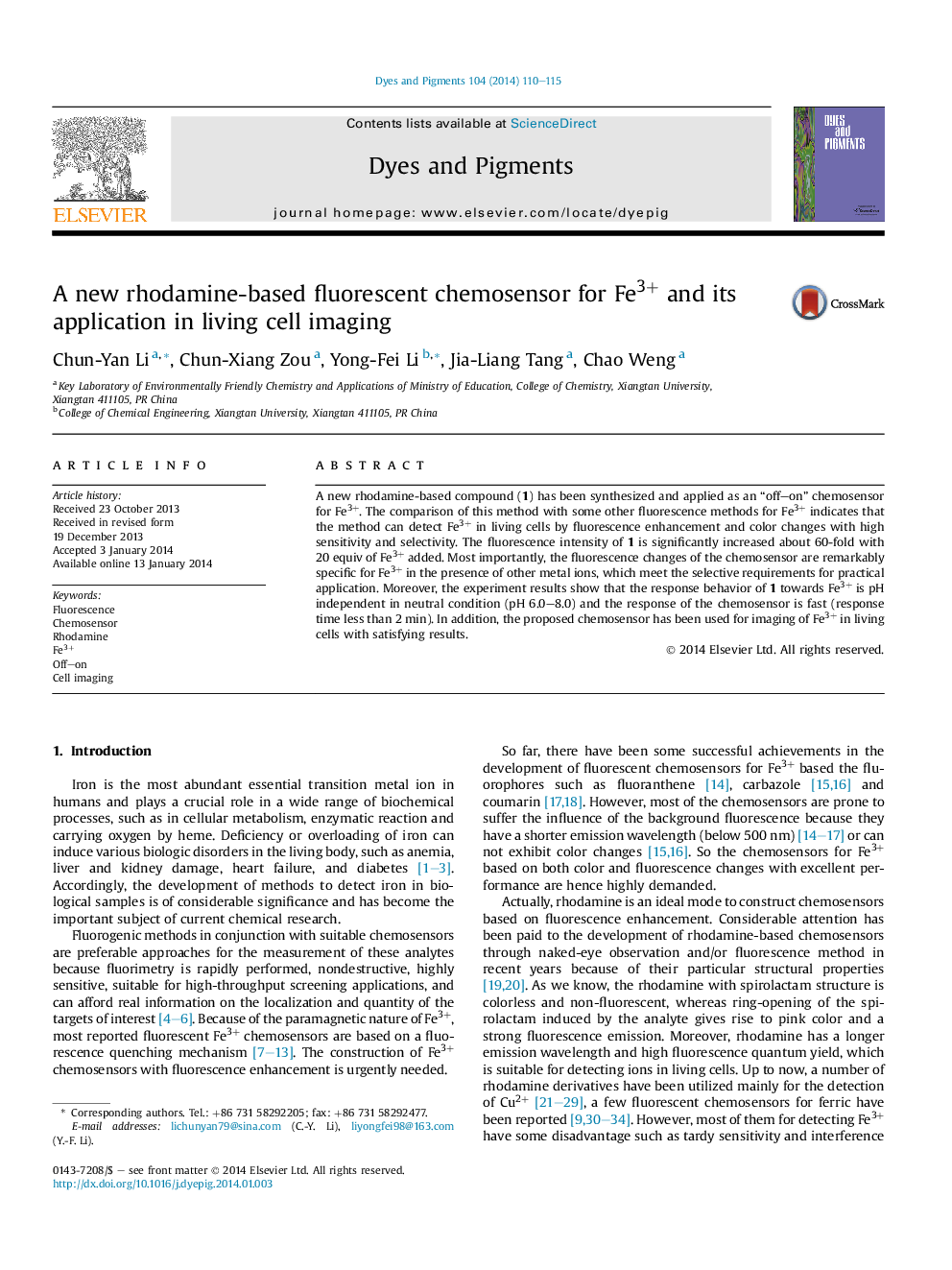| Article ID | Journal | Published Year | Pages | File Type |
|---|---|---|---|---|
| 6600469 | Dyes and Pigments | 2014 | 6 Pages |
Abstract
A new rhodamine-based compound (1) has been synthesized and applied as an “off-on” chemosensor for Fe3+. The comparison of this method with some other fluorescence methods for Fe3+ indicates that the method can detect Fe3+ in living cells by fluorescence enhancement and color changes with high sensitivity and selectivity. The fluorescence intensity of 1 is significantly increased about 60-fold with 20Â equiv of Fe3+ added. Most importantly, the fluorescence changes of the chemosensor are remarkably specific for Fe3+ in the presence of other metal ions, which meet the selective requirements for practical application. Moreover, the experiment results show that the response behavior of 1 towards Fe3+ is pH independent in neutral condition (pH 6.0-8.0) and the response of the chemosensor is fast (response time less than 2Â min). In addition, the proposed chemosensor has been used for imaging of Fe3+ in living cells with satisfying results.
Related Topics
Physical Sciences and Engineering
Chemical Engineering
Chemical Engineering (General)
Authors
Chun-Yan Li, Chun-Xiang Zou, Yong-Fei Li, Jia-Liang Tang, Chao Weng,
